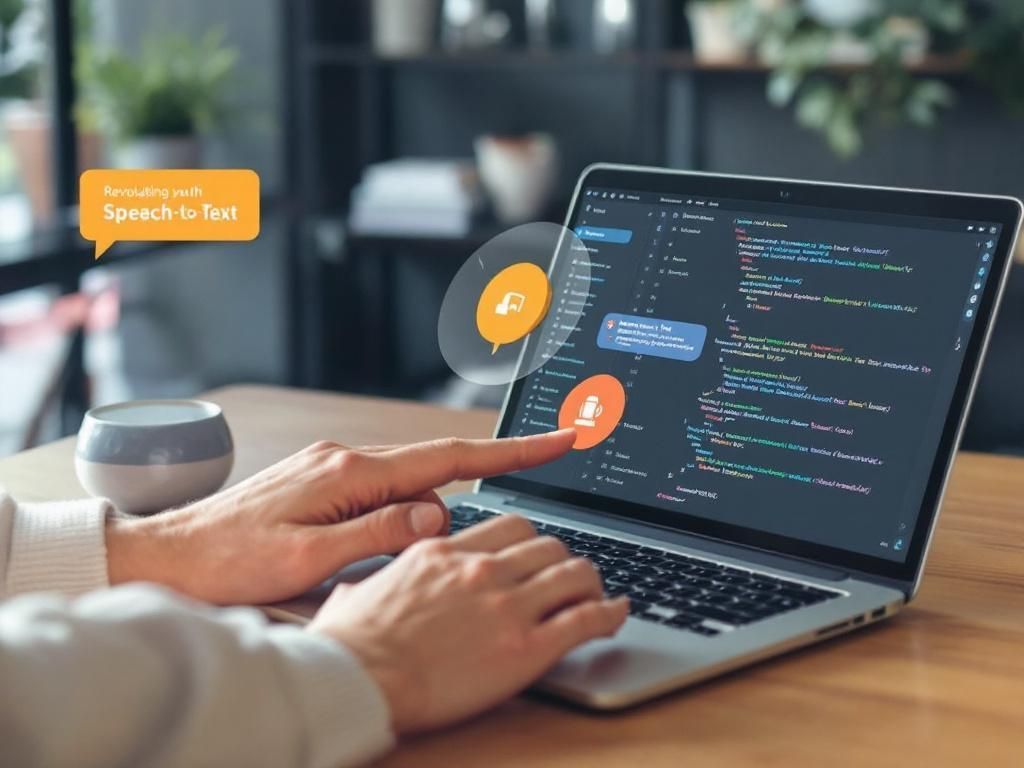In the ever-evolving landscape of technology, the quest for efficiency and productivity remains a paramount goal for professionals across various fields. One of the groundbreaking advancements that has emerged in recent years is speech-to-text technology. This innovation enables users to convert spoken language into written text, streamlining workflows and enhancing communication. In this article, we will explore the numerous benefits of speech-to-text solutions, their applications in different sectors, and how to effectively integrate them into your daily routine.
The Evolution of Speech-to-Text Technology
Speech-to-text technology has come a long way since its inception. Originally, voice recognition systems were limited in functionality and accuracy. However, with the advent of machine learning and advanced algorithms, modern solutions are more reliable and user-friendly. Let’s take a look at the timeline of key developments in this field:
- 1950s: Early voice recognition systems developed by Bell Labs.
- 1980s: Introduction of discrete speech recognition systems.
- 2000s: Advent of continuous speech recognition.
- 2010s: Machine learning algorithms enhance accuracy.
- Present: Real-time transcription with high precision.
Benefits of Using Speech-to-Text Solutions
Integrating speech-to-text technology into your workflow can yield a multitude of benefits:
1. Increased Efficiency
Typing can be time-consuming, especially for those who are not proficient keyboard users. Speech-to-text solutions allow users to dictate their thoughts, significantly reducing the time spent on documentation and communication.
2. Enhanced Accessibility
For individuals with disabilities or those who struggle with typing, speech-to-text technology offers an invaluable tool. It enables them to interact with digital platforms more effectively.
3. Improved Focus
Dictating ideas and notes can help maintain focus, as it allows users to capture thoughts without the distraction of typing. This is particularly beneficial during brainstorming sessions or meetings.
4. Language Translation
Many modern speech-to-text applications also include real-time translation features, allowing for seamless communication between speakers of different languages. This can enhance collaboration in diverse teams.
Applications Across Various Industries
Speech-to-text technology has a wide range of applications across different sectors:
1. Healthcare
In the medical field, speech-to-text solutions can aid in:
- Creating patient records.
- Documenting clinical notes.
- Transcribing dictations from healthcare professionals.
This not only saves time but also helps maintain accurate documentation.
2. Legal
Lawyers can benefit from speech-to-text technology by:
- Drafting legal documents more quickly.
- Transcribing court proceedings and depositions.
- Improving communication with clients through quick note-taking.
3. Education
In educational settings, speech-to-text can enhance learning by:
- Transcribing lectures for students.
- Assisting students with disabilities.
- Facilitating language learning through pronunciation practice.
4. Business and Administration
In the corporate world, professionals can streamline their workflows by:
- Transcribing meetings and conference calls.
- Drafting emails and reports through dictation.
- Conducting market research by quickly documenting insights.
How to Choose the Right Speech-to-Text Solution
When selecting a speech-to-text application or service, consider the following factors:
| Feature | Importance | Considerations |
|---|---|---|
| Accuracy | High | Test the software with diverse accents and dialects. |
| Integration | Medium | Ensure compatibility with existing tools and platforms. |
| Language Support | Medium | Check for support of multiple languages if needed. |
| User Interface | High | Opt for a user-friendly design that facilitates ease of use. |
| Cost | Medium | Compare pricing models (subscription vs. one-time payment). |
Integrating Speech-to-Text into Your Workflow
To effectively incorporate speech-to-text technology into your daily routine, follow these steps:
- Identify Needs: Determine what tasks you want to optimize with speech-to-text.
- Select the Right Tool: Research and choose a solution that aligns with your needs.
- Set Up and Configure: Install the software and customize settings, including language options and voice recognition training.
- Practice: Spend time familiarizing yourself with commands and features to maximize efficiency.
- Monitor and Adjust: Regularly evaluate performance and make necessary adjustments based on your experience.
Future Trends in Speech-to-Text Technology
The future of speech-to-text technology is promising, with ongoing advancements on the horizon:
1. Enhanced Contextual Understanding
Future systems are expected to have improved contextual awareness, allowing for more accurate transcription in varying situations.
2. Better Noise Cancellation
As technology progresses, we can anticipate systems that effectively filter background noise, producing clearer transcriptions even in crowded environments.
3. Greater Personalization
Machine learning algorithms will increasingly learn individual speech patterns, enhancing overall accuracy and user experience.
4. Wider Adoption of AI
With the rise of artificial intelligence, we can expect speech-to-text technology to integrate seamlessly with other AI tools, revolutionizing communication across various platforms.
Conclusion
As technology continues to advance, speech-to-text solutions stand out as a powerful tool that can revolutionize workflows across numerous industries. By embracing this innovation, professionals can enhance their productivity, streamline communication, and improve accessibility within their work environments. Whether you are in healthcare, law, education, or business, integrating speech-to-text technology is a step forward in optimizing your daily tasks. The future holds exciting possibilities, and staying ahead of these trends will ensure you can leverage every opportunity to enhance your professional workflow.
FAQ
What is speech-to-text technology?
Speech-to-text technology converts spoken language into written text, allowing users to transcribe audio recordings or dictate text efficiently.
How can speech-to-text improve productivity?
By enabling users to transcribe meetings, take notes, and draft documents hands-free, speech-to-text can significantly streamline workflow and save time.
Is speech-to-text technology accurate?
Yes, modern speech-to-text software utilizes advanced algorithms and machine learning, achieving high levels of accuracy, especially with clear audio and proper diction.
What industries benefit from speech-to-text solutions?
Industries such as healthcare, legal, education, and media benefit greatly from speech-to-text solutions for transcription, documentation, and accessibility purposes.
Can speech-to-text be used in multiple languages?
Yes, many speech-to-text applications support multiple languages and dialects, making them versatile tools for global communication.
What devices are compatible with speech-to-text software?
Speech-to-text software is compatible with various devices, including smartphones, tablets, and computers, allowing for flexible usage across platforms.


